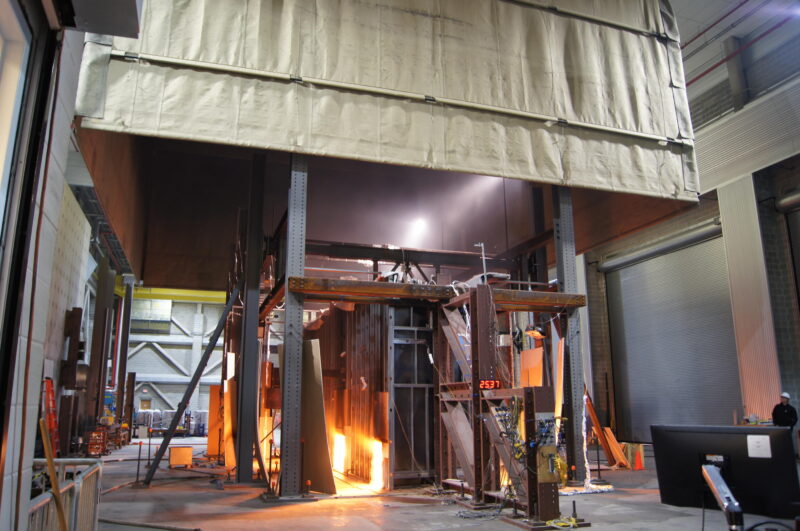In an era where unpredictable extreme events loom ever closer on the horizon, the role of structural fire engineering has never been more critical. This specialized field delves deep into the integration of fire safety within the broader architectural and engineering frameworks of buildings, fundamentally reshaping how structures respond when faced with perilous flames and intense heat.
From high-rise towers to sprawling industrial complexes, the need for resilience becomes paramount. With each innovative strategy, fire engineers craft solutions not merely to withstand fire but to protect lives and preserve property, orchestrating materials and design principles in a symphony of safety.
As we navigate the complexities woven into these life-saving measures, the intricate relationship between engineering, architecture, and fire safety emerges as a cornerstone of modern construction. Join us as we explore how the meticulous application of fire engineering principles safeguards our built environment against the fiercest of challenges.
The Role of Structural Fire Engineering in Building Safety

Structural fire engineering plays a pivotal role in ensuring the safety and resilience of buildings during extreme events, particularly in the face of fire hazards. By integrating advanced design principles and materials, engineers create structures capable of withstanding high temperatures and preventing the rapid spread of flames.
This discipline goes beyond mere compliance with codes; it involves a thorough analysis of how buildings behave under duress, assessing factors like load-bearing capacities and thermal properties. Consider the moments of chaos when flames engulf a structure; its the strategic placement of fireproof materials, the intelligent layout of escape routes, and the innovative use of ventilation systems that can mean the difference between catastrophe and survival.
Ultimately, structural fire engineering is not just about protecting bricks and mortar; it’s about safeguarding lives, ensuring that when disaster strikes, our buildings stand resilient against the ravages of fire.
Key Principles of Structural Fire Engineering

Structural fire engineering is grounded in several key principles aimed at safeguarding buildings from the devastating impacts of fire. At its core, this discipline focuses on understanding how materials respond to elevated temperatures and fire exposure.
Engineers prioritize using fire-resistant materials in conjunction with innovative design strategies, ensuring that critical structural elements can withstand extreme heat without compromising overall integrity. Additionally, active and passive fire protection systems are integrated to control flames and smoke, offering vital seconds for occupant evacuation.
A thorough risk assessment guides the entire process, taking into account the building’s use, occupancy loads, and local regulations, enabling a customized approach to enhance resilience. Ultimately, the blend of material science, engineering principles, and strategic planning creates a robust framework that not only protects lives but also preserves property during extraordinary fire events.
Assessment of Fire Risks in Various Building Types
Assessment of fire risks in various building types reveals an intricate landscape where architecture, occupancy, and materials converge to inform safety protocols. In high-rise structures, for instance, the vertical stacking of spaces creates unique challenges, necessitating advanced detection and suppression systems to combat the fast-paced spread of flames.
Conversely, single-family homes, often composed of combustible materials and nestled in close proximity, face different perilous scenarios, emphasizing the need for robust exits and fire-resistant landscaping. Meanwhile, industrial facilities, with their vast open spaces and the presence of hazardous materials, require meticulous fire risk assessments to identify potential ignition sources.
Each building type presents its own array of vulnerabilities, calling for a tailored approach to fire safety that incorporates the latest innovations in structural fire engineering—for only by understanding these diverse risks can we fortify our buildings against the unpredictable fury of fire.
Conclusion

In conclusion, structural fire engineering plays a crucial role in safeguarding buildings during extreme events, ensuring not only the integrity of structures but also the safety of their occupants. By incorporating advanced design principles, innovative materials, and rigorous testing protocols, fire engineers help to mitigate risks associated with fire hazards and enhance the resilience of buildings.
As urban environments continue to evolve and face new challenges, the importance of this specialized field will only grow. For those interested in learning more about how these professionals protect our built environment, check out fire engineer resources to gain further insight into this vital discipline. Through proactive measures and collaborative efforts, we can create safer spaces that withstand the test of time and unexpected emergencies.


